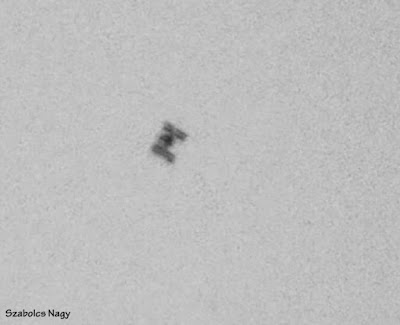Jomagam leginkabb objektumok kozepre igazitasara hasznalom. Legyen ez bolygozas vagy ISS fotozas, ha eleg frame (kepkocka) all rendelkezesunkre, tokeletes celt szolgal, kifejezetten akkor ha a mechanikank nem koveti a cel objektumot pontsan, magyarul ossze-vissza maszkal a kepernyon. Esetleg valaki ugy bolygozik, ahogy en szoktam, barmifele polusraallas nelkul.
Tovabba ha nincs egyatalan semmilyen motoros mechanikank, ebben az esetben kicsit osszetettebb a feladat de igy is viszonylag egyszeruen elkeszithetoek a stackelt bolygo fotok.
De hogy ne menjunk egybol bele a bolygozas technikai reszleteibe, inkabb egy egyszeru repulorol keszult videon szemleltetnem a szoftver tudasat.
Az alabbi video par napja keszult, a Lufthansa egyik Boeing 747-ese huzott el London folott. Vagatlan, eredeti felvetel.
Nem rossz, de azert nem is jo, valljuk be eleg elvezhetetlen a felvetel. Hogy ebbol mi mindent lehet kihozni, ime....
A PIPP megnyitasa utan ket fele modon nyithatjuk meg a video fajl.
1. File menupont alatt Add Source File
2. Source file fulre kattintas utan egyszeruen behuzzuk a fajlt (drag and drop)
Miutan ez megvan, a Processing Options fulre kattintsunk.
 |
| 1. kep - Processing Options |
Az ablak jobb feleben levo lehetosegek kozul mindenkepp legyen bejelolve
- a Frame Stabilization Mode lehetosegei kozul az Object/Planet
- az Object detection
- Object detection Treshold (errol bovebben a kovetkezo pontban)
- Center object in each frame - minden erzekelt objektumot kozepre helyez
- Cropping - kozrulvagas, nem feltetlenul fontos, de en hasznaltam
Object detection Treshold
 |
| 2. kep - Auto Object Detection Threshold |
A fenti ket foton lathato kis ablakban jobb oldalon a detektalt terulet lathato, melyet pirossal emel ki a progi. Az elso kepen autora van allitva es lathato, hogy nem igazan kepes erzekelni a repulot, az egesz frame piros szinu. Erdemes jatszogatni a lehetosegekkel, miutan az Auto Object Detection Treshold opciot inaktivaljuk (pipa eltuntet) es mi adunk meg erteket. Nekem ebben az esetben 100 volt a megfelelo ertek, a masodik kepen latszik hogy csak a repulotest es a kondenzcsik maradt piros, magyarul a kozepre helyezes soran erre fokuszal az algoritmus.
 |
| 3. kep - Output Options |
Ha ez megvan, irany az Output Options ful, ahol tetszolegesen kivalaszthatjuk, milyen formatumban szeretnenk elmenteni a vegeredmenyt. En ebben az esetben AVI-ban mentettem, de kepkockakra lebontva is elmentheto a video ami ISS kozelik eseteben a fonyeremeny :)
 |
| 4. kep - Mentes |
Miutan hagytam a PIPP-et dolgozni, ez a video lett a majdnem vegleges valtozat. Szepseghibaja, hogy ahogy eleri a szines levelekkel diszitett fa lombkoronat, teljesen osszezavarodik - ertheto modon - es bizonyos ponttol hasznalhatatlan a felvetel. De ha takarasmentes latomezom lett volna ( felhomentes egen), valoszinuleg vegig kovetheto lett volna a repulo nagy nagyitas mellett.
Miutan kivagtam a hasznalhatatlan reszeket, ime a vegeredmeny.
Pontosan ezzel a technikaval keszulnek az ISS-rol keszult kozeli videoim is. Termeszetesen nem en kovetem ennyire stabilan az Urallomast, szoftveres utomunka segitsegevel keszult. Ime egy pelda.












































